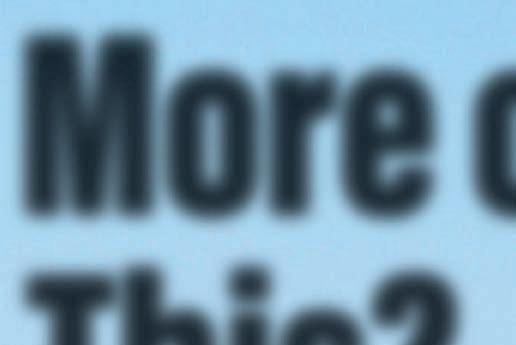








We teach business skills, insurance protocols, application of state laws, and how to fairly, ethically, and profitably charge patients for the need-based dentistry you provide.
Stop perceived insurance limitations from dictating how you treat your patients!
We teach you how to be profitable on nearly every procedure, even with PPO plans
Learn about underutilized CDT codes you aren't using today
Our Stress-Free Guarantee: If you don't make money, neither do we!
Nearly all our clients generate $8K-$14K in new NET revenue their first month

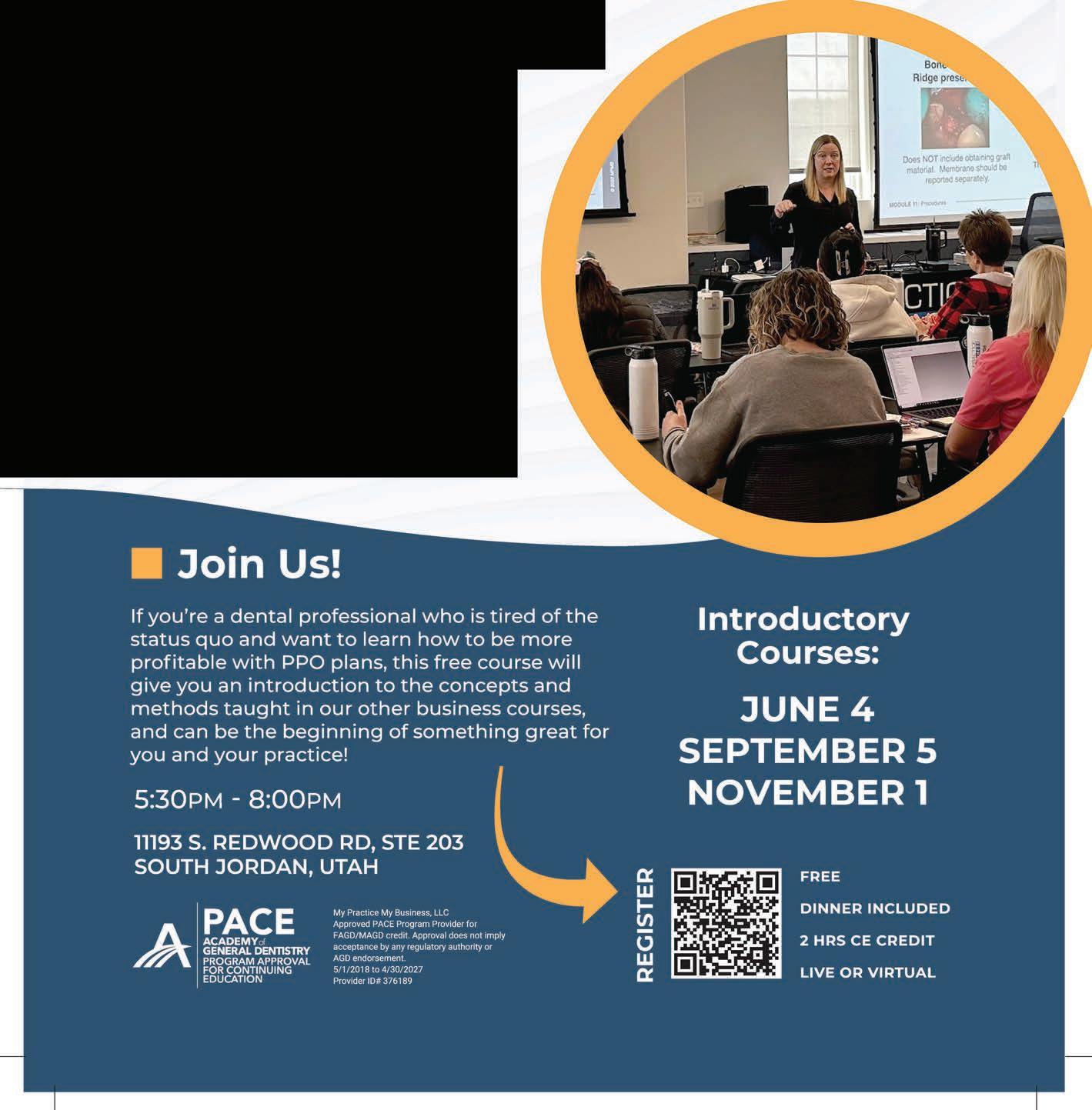
Dr Len Aste Dr Manny Chopra
Stephannie Covarrubias
Dr Rich Fisher
Dr Laura Kadillak
Dr Brent A. Larson
Dr Alayna Schoblaske
Kimber Solana
Dr Bryan Trump
Photo Credit: visitutah.tandemvault.com / (clockwise) Helper – © Austen Diamond Photography Brigham City – © 2016 Marc Piscotty Ogden – © James Winegar Vernal – © Matt Morgan Cedar City – © Matt Morgan

The Utah Dental Association holds itself wholly free from responsibility for the opinions, theories or criticisms herein expressed, except as otherwise declared by formal resolution adopted by the association. The UDA reserves the right to decline, withdraw or edit copy at its discretion.
UDA Action is published bi-monthly. Annual subscriptions rates are complimentary to all UDA members as a direct benefit of membership. Non-members $30.
Utah Dental Association, 801-261-5315 1568 500 W Ste. 102, Woods Cross, Utah 84010 uda@uda.org
UDA Action is published by Mills Publishing, Inc. 801-467-9419; 772 East 3300 South, Suite 200, Salt Lake City, Utah 84106.
Inquiries concerning advertising should be directed to
Inc.

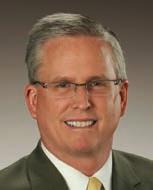
When you think of a “typical” patient seen at a donated dental clinic, do you picture a drug-addicted young man, a homeless middle-aged woman, an elderly immigrant who does not understand a word you are saying? Perhaps, you can imagine a patient with physical disability or psychological issues, someone without a high school degree or any job experience in the past few decades, or a patient with a criminal record. While all these categories of people can and do get treatment at the safety-net clinics, you would be mistaken to think they are the only ones who find themselves unable to afford dental care. This is what I discovered while recently working at Salt Lake City Donated Dental. Let me share with you the stories of three patients recently treated at the clinic:
1) A 5-year-old Parin was diagnosed with amelogenesis imperfecta and tooth abscess, his gums were infected and inflamed. The family did not have the means to complete the treatment in a private dental office. Despite the best oral hygiene habits, the condition was causing him a tremendous amount of pain, so he learned to break the food apart by hand before eating it, so he would not have to chew.
The pediatric dentist completed 11 extractions and placed 9 crowns. At the post-op check, Parin was excited to show off his “cool vampire teeth” to all staff while his mom thanked the team with tears in her eyes saying, “I don’t know what I would do without your clinic.”
2) Angelica was very nervous and embarrassed to show her teeth. After a few minutes in a dental chair, she shared her story. As a teen, she had a horrible experience in a dental office, which left her terrified of the dentist. She neglected her oral health for over 24 years and started to distance herself from friends and family because of her insecurities and lack of self-esteem. She even avoided parent teacher conferences so that she would not have to talk to the teacher and show her teeth. After learning about her dental condition, Angelica agreed to dental work. At the end of her treatment, she gave the dental hygienist the biggest smile and got very emotional. She was excited to take control of her oral health, but more than that she could not wait to mend old relationships!
3) Since retiring, Kevin received fixed income that was not enough to pay for any health care services not covered by Medicare. He faithfully followed good oral hygiene, but major health problems and unfavorable genetics combined to contribute to poor oral health, which led to full mouth extractions and dentures. Kevin has been a patient for 7 years Donated Dental and often tells the staff and doctors he has never felt uneasy or undeserving at the clinic. He appreciates the team working patiently with those who need additional explanations.
After telling me the stories of these patients and many similar other ones, Sasha Harvey, Executive Director of Salt Lake Donated Dental says, “as you can see, there are no “typical”
patients. They have college degrees and high dental IQ’s. They are deeply caring parents and responsible citizens; they are community leaders and educators who only have one thing in common – they cannot afford sorely needed dental care.”
Harvey goes on to say, “So, maybe a “typical” volunteer dentist can help them! Someone with plenty of time on their hands who is financially secure and into public health. A person who frequently goes on humanitarian trips overseas and enjoys teaching new dental health professionals the art and the science of dentistry. If those are your only criteria, you are wrong again. Donated clinics are lucky to work with incredibly diverse providers.
1) A recent dental hygiene school graduate said, “Just like one bad experience can affect a person’s life, one appointment empowering a patient to take control of their health and learn ways to maintain their beautiful smile can have such a positive, life-changing impact. I love my job!”
2) A retired dentist shared, “Most of our patients thank me profusely. Some tear up. One or two don’t know what to say, so they don’t say anything. I thank them for the privilege of helping them and at the same time allowing me to continue to help without worrying about collecting the fee or worrying about any bills.”
3) Dentists and hygienists who work full-time jobs at their private offices comment on the community clinics being clean, modern, and very well organized. They find the equipment to be in excellent repair, the software and x-ray systems to be good, and the supporting personnel—both front and back office—to be warm, engaging, and supportive. Treatment plans are complete and offer a variety of options for needy patients beyond simply extracting teeth. Patients are truly appreciative, which is not easy when so many people fear the dental experience.”
As you can see there are no “typical” dental volunteers. You can be a practicing dentist with an occasional Friday off and no activities planned. You might be enjoying retirement and suddenly realizing that you still possess amazing talents that can transform and uplift your neighborhood, your city and your state. You might be fresh out of school and looking for more experience in a non-production-driven and stress-free environment. You might look for new friendships in the community of like-minded professionals. There is only one thing the volunteers have in common – in one way or another, they find it rewarding to be able to give back to those who have a need but not the means.
There are 273,000 people in Utah who live in poverty. If you have the courage to be the “atypical” volunteer who intentionally blocks out a calendar day for a few hours every month to give back to the community where you live, who leads by example and advocates for those in need, who knows that it takes just one person to move the needle in the right direction, you have the power to make a change. Reach out to one of the community clinics listed on the UDA website: https://www.uda.org/classifieds/humanitarian-opportunities Len Aste DDS
Life in dentistry is easier with the ADA Member App. Members can find mentoring opportunities, discover their ideal career path, track CE and much more.
The most recent enhancements came from a discussion with dentists and dental students. They wanted timely prompts for things that needed to get done, like reminders for credentialing and licensure so they don’t expire.
Now, app users will never miss a deadline again. Add credentials, licensing and certificates to the Docs wallet in the app and set reminders for each document for 5, 15, or 30 days prior to expiring. Access files from anywhere and share them effortlessly.
App users also requested an easy search option, which is now an option on the home screen of the app.
Because of ADA’s collaboration in designing the app with dentists and dental students, it’s APPsolutely packed with perks. It provides a personalized membership experience, from connecting with peers to reading the latest news, tracking CE courses and career tools.
“My interest is the advocacy news,” said Dr. Amrita Patel, member since 2012, “So, I get to access all the articles specifically about that right at my fingertips, which I really like.”
Professional aspirations can change over time, and finding the right fit is critical. That’s why members can take an exclusive
career path quiz that matches interests and aspirations to one of nine career settings. “I’m a fairly new graduate from dental school and think [the career path quiz] was a good way to explore what options are out there,” said Dr. Lauren Zuidema, member since 2021.
The chat feature makes peer-to-peer knowledge sharing easily accessible with a filter for available mentors. Under their communications settings, users can opt-in to be a mentor and offer their expertise.
Another newer feature available in the app is support with dental licensure portability. Learn what’s required to obtain a license in a new state by tapping on “Dental Licensure” in the Main Menu under Benefits.
Career development opportunities are in your hands with the ADA Member App, included with your UDA and ADA membership. Download for free and use your member login to get started.
Learn more at ADA.org/App or search “ADA Member App” in the App Store or Google Play to download now.
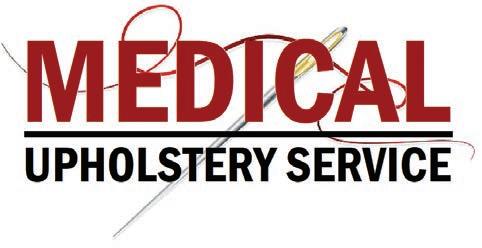
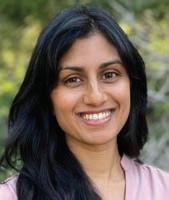
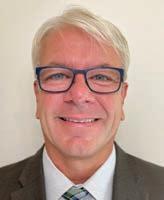
The Utah Dental Association would like to thank Dr Glenn Zeh for his many years of service as the Utah Dental Political Action Committee Chairman. Many of the legislative successes have been spearheaded by Dr Zeh. The UDA would like to welcome Dr Samira Oveson as the new UDPAC Chairperson. We are excited to work with Dr Oveson to further the legislative efforts of the dentists of Utah. Dr Samira Oveson Dr Glenn Zeh

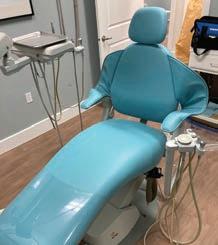
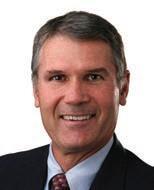
Water fluoridation is an extremely beneficial public health program but continues to be controversial in Utah. As dental professionals we are experts in this area. A quick review of some of the fluoride facts can be very helpful in allowing us to help educate those around us.
Fluoride, a naturally occurring mineral, has proven to be safe and very effective in preventing tooth decay. Fluoride is simply the fluorine ion or a compound containing the fluorine ion. The element fluorine is found throughout the earth’s crust and is listed in the periodic table of elements. It is found in rocks and soil. Water dissolves the fluoride minerals and allows fluoride into ground water, rivers, lakes, and oceans. The concentrations are variable from area to area. CWF or Community Water Fluoride is the program that monitors and adjusts the amount of fluoride in the water to optimal levels. That level, as determined by the CDC is 0.7 mg/L. (1) (mg/L is now the correct terminology and is the same as ppm).
The Environmental Protection Agency (EPA) mandates that all water systems have less than 4mg/L or 4 ppm, the maximum contaminant level. The secondary maximum contaminant level, which is not enforceable but does require consumer notification is 2mg/L. This is the level where slightly increased mild-moderate fluorosis in enamel might occur. (1)
Dentists have known about the benefits of both topical and systemic fluoride for years. Because of the controversy of regulating additives in water systems, systemic fluoride has become one of the most highly studied minerals. There have been almost 7000 studies done on the safety and use of fluoride.
It has now been shown that fluoride acts in 3 ways to protect teeth.
• Prevents or delays demineralization of tooth structure.
• Promotes remineralization of demineralized tooth structure
• Hinders the ability of bacteria to produce acids and stick to the tooth surface. (3)
As we know the most beneficial use of systemic fluoride occurs when given to children where it incorporates into developing teeth. Studies show adults still gain benefits from CWF. Ingested fluoride reaches a peak concentration within 20-60 minutes and returns to baseline within 3-6 hours. Fluoride that is not absorbed is excreted in the urine. (2) When small amounts of fluoride are systemically available it will be present in saliva and stored in dental plaque benefiting teeth in the above-mentioned ways (3). Because dental disease has been such a significant reason for soldiers to be classified as nondeployable, the military mandated, effective 2016, that all water systems operated by the Dept of Defense serving over 3300 persons, provides optimally fluoridated water.
Community Water Fluoridation (CWF) has been determined by the CDC (Centers of Disease Control) to be one of the top 10 public health achievements of the 20th century.(4) CWF has proven to reduce dental disease in children and adults by at least 25%; some communities have seen a much greater reduction. For most cities every $1 invested saves $32 - $38 per person in dental treatment costs. (5) In spite of these benefits CWF is still a controversial issue in Utah.
As of 2018, 73% of the population in the United States, benefited from CWF. In Utah the number is approximately 52.5%. (5)
In Utah, for fluoride to be put in the water or taken out of the water requires a public vote. Utah has had CFW in some municipalities since 1965. Salt Lake County, after a vote in 2000 implemented CFW in 2003. Recently, in 2023, Brigham city, one of Utah’s first fluoridated water systems, had a vote to remove fluoride from the water. Fortunately, with help from the UDA and UOHC, it was soundly defeated by a margin of 2 to1. It has now been discussed in North Salt Lake and Herriman by City Councils as to if it should be brought up for reconsideration in their counties.
The Utah Dental Association has taken a strong pro fluoride stance and has partnered with the Oral Health Coalition (UOHC) and the UDHA to promote CWF. These organizations have put together educational materials available to anyone who would like them. The challenge is getting the word out.
Please take a moment in your office to post educational fluoride material and talk positively to your patients about fluoride. Be ready to attend a city or county council to help educate our elected officials and make sure they can distinguish correct information from misinformation. Fear has never led to good decisions. Educated, well intended individuals make better decisions. As we experience times of looking for ways to trim budgets and questioning public programs, let’s be proactive and use our training to educate decision makers. We want the programs that benefit the most people.
If your community does not have CFW and you would like to see it implemented, please ask for help from your dental association; you will find it is readily available. Let’s continue to focus on prevention to make our patients and communities as healthy as possible.
Brent A. Larson DDSUtah Oral Health Coalition
1. Fluoridation Facts published by the ADA 2018 pg. 42
2. Fluoridation Facts published by the ADA 2018 pg. 47
3. Fluoridation Facts published by the ADA 2018 pg. 14
4. Centers for Disease Control and Prevention. Ten great public health achievements–United States, 1900-1999. MMWR 1999; 48 (120:241-3). Fluoridation Facts Published by the ADA 2018 pg. 85
5. Salt Lake County Health Dept. FAQ About Fluoride and Community Water Fluoridation

1. Do you have or have you considered an exit strategy?
2. How long do you plan on being a practice owner? If your health allows, would you like to continue practicing after that point?
3. Do you know what your practice is worth today? How do you know? When was your last Practice Valuation done?
4. Have you met with a financial planner and have a documented plan? Have you established a liquid financial resources target that will enable you to retire with your desired lifestyle/level of income?
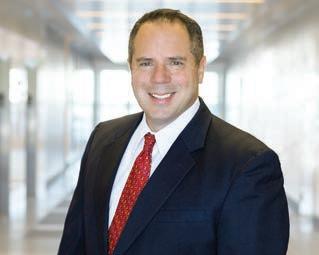

The ADA is upgrading its technology to a modern system that will enable the ADA and Tripartite to deliver more value to our customers through a more streamlined experience and enhanced services and support.
As part of this upgrade, all ADA customers will be required to update their login credentials beginning July 8.
Why do I need to change my login for my ADA account?
Your ADA member number will no longer be used for login. Instead, you will use your unique email address and password to access your ADA account.
How do I change my password?
On or after July 8, 2024, when you click “log in” on ADA.org and many state and local dental society websites, you will see a new login screen and a prompt to log in with your email address and reset your password.
When do I need to change my ADA login username and password?
You will need to change your username and password beginning on July 8, 2024, when the new system comes online. You do not need to do anything prior to July 8. When you log in to your ADA account on or after July 8, your username will require an email address that is unique (only used by you). This email will be your new username. You will also need to create a new password.
Why do all customers need to use a unique email address to log in?
Beginning July 8, your username will change from your ADA member number to your unique email address. This is required to improve the security of your account and ensure that only authorized users can access the ADA system.
What happens if I do not know the email address that is associated with my ADA account?
The ADA will send you an email prompting you to change your password; you will use this email for your ADA username. If you try to log in with one or more email addresses that are not recognized, contact the Member Service Center for support at 312-440-2500 or email msc@ada.org.
Why do I need to create a new ADA password?
The ADA requires that all customers create a new password to improve the security of your ADA account.
What if I do not have a unique email address, or I have shared my email address with other customers, or I receive a message that my email address is already in use?
The new system will require unique login credentials for each customer. You may need to use a different email account if your email address is shared with other people to access ADA resources. If you believe your email address is being shared, please contact the Member Service Center at 312-440-2500 or email msc@ada.org to request support in establishing a unique email address for your account.
How will I know if the email request to change my log in is from the ADA?
On July 7 or 8, you will receive an email from the ADA notifying you that you must change your password. Visit ADA. org and click “log In” to access the ADA’s new login page which will confirm that a change in login is required. If you have concerns about the validity of the email request, you may contact the Member Service Center at msc@ada.org or call 312-440-2500.
What if my password reset email does not arrive in either my mailbox or spam folder?
If you do not receive the email to reset your password in July, you can still go to ADA.org, click “log in” and you will be guided to create a new password.
What should I know about the system transition time from June 30–July 7?
From June 30–July 7, ADA will be moving from the old system to the new. You will be able to log in to ADA sites to access resources, downloads and CE you may have already purchased. You may also place new online orders for ADA Store products and ADA webinars and online courses.
However, during this week, you will not be able to change your account information, receive new products and services or register for events.
What should I expect to see when I log in to ADA sites for the first time on or after July 8?
When you log in to ADA websites and many state and local society websites, you’ll find your profile details including both personal and professional information, along with access to tripartite resources and membership status. By logging into your account, you can also explore additional features such as state or local product catalogs including continuing education, as well as information on products, services, and upcoming events offered by state or local societies.
Can I order from ADA Store and ADA CE during the system transition time (June 30-July 7)?
You can order from ADAstore.org and CE.ada.org during the transition time by placing your order online.
ADA Store orders: New online orders can be placed, but products will not start shipping until July 8. New e-books will not be accessible on ebooks.ada.org until July 8.
CE courses (livestream and online) can be ordered from CE.ada. org and completed. Credits for courses completed during the transition will appear on your transcript. Previously purchased courses will still be accessible, and previously completed credits will still appear on your ADA transcript.
Online registration for CE workshops will be paused during this time. However, credits for workshops previously taken will still appear on your transcript at CE.ada.org.
(continued on next page)

I really enjoy competitive sports! I played soccer in high school, played in men’s soccer leagues through undergrad and played flag football and basketball in dental school. Today I coach soccer, where I still love a good battle on the pitch.
Two outlier high school sports I have learned to enjoy are cross country and track, mainly because your biggest competition is yourself and the clock, and there is no way to cheat the clock. I guess running coaches could play politics when it comes down to relays, but athlete times are still hard to discount. A couple other things that I have liked about these two sports is the athletes seem to really like each other and encourage each other. The encouragement does not end with your own team but with other teams as well. Unless you are the kid that crosses the finish line first, screaming because you think you are the greatest, events usually end with athletes walking around high fiving or using some other form of congratulations with their competition. It is great!
So, what about dentistry? It is very important for all of us to see the world of dentistry as an entire group. Specialists included. We are all running the race of dentistry, success is based on outcomes. Individually we only have our desire to improve and a limited amount of time. If our clock is the physical clock realize the only way to cheat the clock is poor quality outcomes and make sure that no one ever convinces you outcomes do not matter.
Those at the meet are all of us, dentists. If you choose to compete in an event, please make sure that you have the experience to perform what you are doing (especially when a patient appeals to your “greatness” that you are the only one they want to perform the procedure). Excellence does not come from just experience in dentistry, as we are practicing every day. Excellence can be obtained with knowledge gained through quality education. My experience has been that rarely in dentistry is cheap education great.
Please make sure you are investing in your future and the procedures you enjoy and want to perform well. Most track athletes do not choose to compete in events they are not great at, rarely

do you see a 3200-meter runner excel at the 100-meter hurdles. Compare your successes and failures to what is acceptable within the profession. If your successful outcomes are not on track with what the specialists are performing, seek help through more education or a specialist in your area. And please don’t allow the lure of seeing referrals as lost revenue, rather look at it more as advertising, in the fact that a happy patient usually will refer more patients back to your office.
Specialists are definitely part of our team. Interdisciplinary treatment planning and case completion is critical to the success of dentistry. Reach out to those in your area and make friends. Celebrate the success of finishing a difficult case together as you see successful outcomes. Traditionally track coaches are not knowledgeable in all areas. There are many different specialties in track; sprints, distance, throwing, hurdling, jumping, etc. I enjoy performing the tasks I choose to perform and absolutely love the specialists on my interdisciplinary team. I have even seen track coaches from other schools helping coaches with lesser knowledge in a particular area improve their coaching and thus athletes are the beneficiaries.
Will I need to use my new ADA account login credentials to access CAQH?
Yes. Your unique email address and password will be used to log in to CAQH starting July 8.
Who can I contact for assistance?
You can call the ADA Member Service Center at 312-4402500, available weekdays between 7 a.m. – 6 p.m. Central, or send us a message via email or chat.
Finally, stay connected with your peers through study clubs and UDA/District dental events. Share with others your successes and how you found your success (coaches sharing training ideas). Continuing education is vital to expanding one’s procedures (Events). Our race through our dental profession should be enjoyable with a focus on successful outcomes which is best for all of us. This takes time (practice), quality continuing education ($), and comradery (Coaching). If you are the best at a particular procedure (remove political prejudices), realize you cannot see everyone in the area and that helping others improve helps our profession. Don’t be afraid to talk with your neighbors (teammates). Often, they either have the same problem or they have a solution (coaches sharing knowledge). Competition ultimately should improve outcomes and help you have many PR’s (Personal Records). I hope you enjoy the race!
Rich Fisher, DMD UDA TreasurerA – Attentive! Dental assistants are attentive to patient needs, and they are also attentive to all the little details that make our days run smoothly. They will often be the ones to catch that a lab case isn’t back, or to make sure that they have ViscoStat ready just in case (they always seem to know when “just in case” will be).
S – Supportive! Dental assistants really are mind-readers. They jump in with support at just the right moment chairside. Beyond that, they can often be found helping with anything from unclogging a toilet to hosting a baby shower. They do it all and support us and our patients in so many ways.
S – Sympathetic! Dental assistants are often the first person that a patient interacts with when they come back to the operative. They learn about patients’ pets and families, their weekend plans and their favorite subject in school. They even tune into subtle cues from patients who are feeling anxious and lend a hand to ease their nerves throughout treatment.
I – Inquisitive! Have you ever noted that DAs ask the best questions? I love that DAs often want to learn more about our clinical workflow so that they can understand the “why” behind our “what” and better explain treatments to patients. The questions also keep me on my toes! One time, I had a 15-minute conversation about phosphoric acid etch with a new DA, and I got to break out my dental school notes for a refresher on dental materials.
S - Schedulers! Whether is a Dental assistant-turned-of-
fice-manager, or a DA helping to schedule in the back office, our DA’s often help hold our schedule together . . . and keep us on time. I love my DAs’ subtle Post-it notes on the wall that remind me that they are “ready in A4.”
T – Teachers! Dental Assistants play an important role in patient education. They help present treatment plans, help patients understand the disease process, and explain what each appointment’s treatment entails. We all play in this, of course, but DAs are a critical component.
A – Antiseptic! Dental assistants are often the champions of infection control, and make sure that our rooms are disinfected between each patient, and that our instruments are properly sterilized. We owe much of the safety of the work that we do to dental assistants.
N – Notetakers! Every practice is different but, in many practices, DAs are critical to ensuring proper documentation in the chart note. We rely on them to capture important treatment and conversation details and communicate them clearly in writing.
T – Team players! Dental assistants are critical to team culture. We all know what an impact a positive, kind, and outgoing DA can have on the whole office, and we are so grateful for the dental assistants that are champions of teamwork and excellence. Take time today to thank your dental assistants for all they do for you, your patients and your practice.
Alayna Schoblaske, DMD ODA
Case History: A patient presented to the dental school for evaluation of a soft tissue mass of the left posterior lateral tongue. 1cm x 1cm. Noted by the patients grandson, who was a dental student at the time. Asymptomatic.
Which of the following represents the best diagnosis for the clinic findings:
a) Lipoma
b) Fibroma
c) Neuroma
d) Mucocele
(continued on page 13)
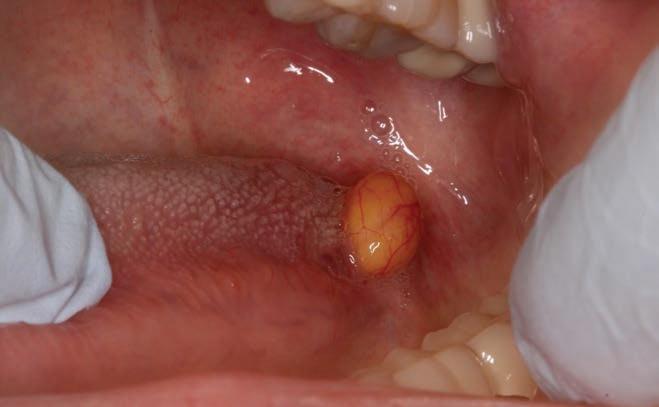
I wanted to share a personal story. Last month, Beth and I went to visit my mom in India; it was a long overdue trip. After the 14-hour flight from Chicago to New Delhi, we arrived to the sounds of a metropolitan city with the hustle of workers attending to their daily tasks, the sweet smell of roses and the visual brilliance of the topiary display at the airport. An iced cold drink at the airport started our car journey to my parent’s home in Jaipur – the pink city. The journey proved to be worth every minute of travel.
Traveling in India is a unique experience of sights and sounds, filled with vibrant colors, bustling streets, aromatic spices and stunning architecture at every turn. It can be both chaotic and serene. From exploring ancient temples, to navigating crowed markets every moment in India is an adventure. Beth and I spoiled ourselves as we were exposed to the sight and smells of new foods and indulged in diverse cooking textures and flavors. We can’t wait to go back!
A recent ODA survey showed that the average member works a 32-hour, four-day work week, reflecting a balanced work/life schedule. I do miss the days when our kids were younger, and
we would pack up the car for the long drive to a Florida beach. Those annual trips are cherished memories.
In my presidential address, I stressed the importance of taking breaks from the daily stresses of dentistry. Dealing with patient concerns, insurance denials and the intensity of working in someone’s mouth can be overwhelming. That’s why it’s crucial to step back and recharge. For me, this means an afternoon nap followed by a good night’s sleep. These breaks give us a chance to remember why we do what we do and renew our commitment to our profession. They’re essential for our overall well-being and effectiveness as dentists. This trip was incredibly peaceful and enjoyable. We explored new places, spent quality time with family and new friends, and enjoyed our meals.
My message to you is to please carve out some time in your schedule to step away from dentistry and spend more time with your family. Whether it’s traveling and sightseeing or simply relaxing in a peaceful setting, you deserve this break!
Manny Chopra, BDS, DMD
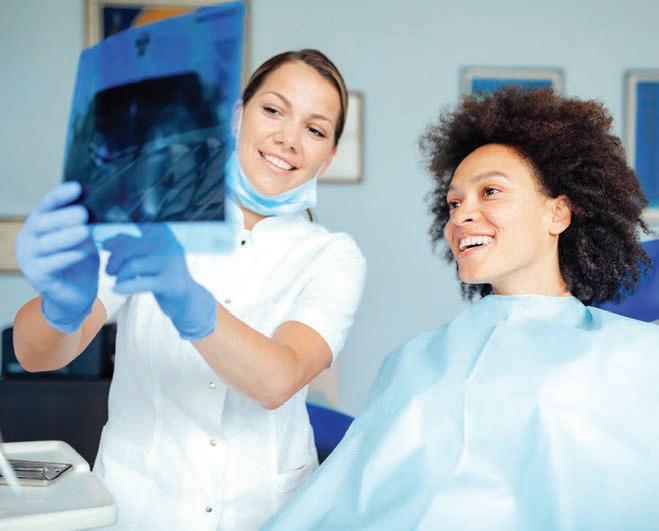
Equipped with the right tools to provide quality care with a smile. Just like you.
Your patients count on your expertise to evaluate and care for healthy smiles. Let your independent insurance agent do the same for you when it comes to recommending coverage options to help protect your practice.
Find an independent agent representing The Cincinnati Insurance Company by visiting cinfin.com or by calling Mike Terrell, 800-769-0548.
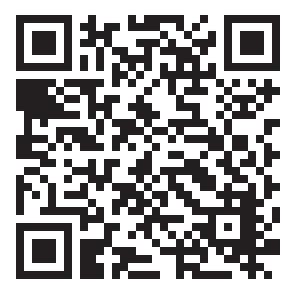
Over 84,000 American armed service members remain missing from 20th century conflicts. Together, we can help bring them home. Our team at the University of Utah is working with the Department of Defense to use chemical information from wisdom teeth to help identify the remains of service members lost in foreign wars.
You can help our IRB-approved study. Clinics performing third molar extractions or referring patients to surgeries can share information about our study (brochures and business cards)
with patients. We also offer compensation to clinics that directly partner with us and help us collect samples.
If you would like to learn more about how to partner with us or more information about our clinical research structure, you can email our Project Coordinator (find-em@utah.edu ) or check out our website: http://find-em.org.
Stephannie Covarrubias, MPH Project Coordinator, SPATIAL, Project FIND-EM

As breaches and fines continue escalating, ensuring your dental practice is HIPAA compliant has never been more important. However, figuring out exactly what you need to do for HIPAA can be time-consuming and confusing. Learn what you need to know about HIPAA in this comprehensive HIPAA guide for dental practices!


Pathology Puzzler (continued from page 10)
Correct answer: (a) Lipoma
A lipoma is a benign tumor of fat (adipose tissue) as well as the most common “mesenchymal” neoplasm. It is usually found on the trunk and proximal portions of the extremities. Lipomas of the oral and maxillofacial region occur less frequently. Accounting for around 1%-4% of all lipomas. Oral lipomas are usually soft, smooth surfaced nodular masses that can be sessile (broad based) or pedunculated (see clinical photo). It is usually present for months to years before being diagnosed. Most are less than 3cm in size but they can be much larger. A yellow color is usually detected clinically but deeper lesions may have a more normal pink color. The most common locations intraorally are the buccal mucosa and vestibule, which account for approximately 50% of cases. Less common sites include the tongue, lips and floor of mouth. Most patients are 40 years old or older. Lipomas are uncommon in children. One clinical/surgical findings that can be helpful in considering a lipoma is that the tissue will
float in formalin (see image below). Adipose tissue is one of the few tissues that will. A fibroma usually has a normal pink color and commonly found along the occlusal plane and other areas that are easily bitten, as they represent a reactive hyperplasia rather than a true neoplasm like the lipoma. A neuroma usually occurs in mental foramen area or after a surgery (traumatic neuroma) and may symptomatic when palpated. A mucocele usually occurs on the lower lip and has a blue hue due to the fluid/saliva accumulation. Conservative surgical excision is curative. When a biopsy procedure is performed, you must submit the excised tissue for microscopic examination.
Works Cited
Neville, Damm, Allen, Chi (2024). Oral and Maxillofacial Pathology, 5th Ed. St. Louis: Elsevier.
Dr. Bryan Trump
Practicing dentistry often involves being in uncomfortable postures and performing repetitive hand motions for long periods of time. As a result, 40-60% of dental professionals suffer from work-related musculoskeletal issues, such as low back pain. “Dental professionals tend to become so focused on their patients and their procedures often to their own detriment, placing them at risk for potential musculoskeletal disorders,”
said physical therapist and ergonomics expert Timothy Caruso, a long term volunteer on the ADA’s Dental Wellness Advisory Committee. “Taking a moment throughout the day, in between patients, at lunch, before you start and after you finish your working day will help to counteract working stresses.” The ADA offers several ergonomics resources at ADA.org/wellness.
Kimber Solana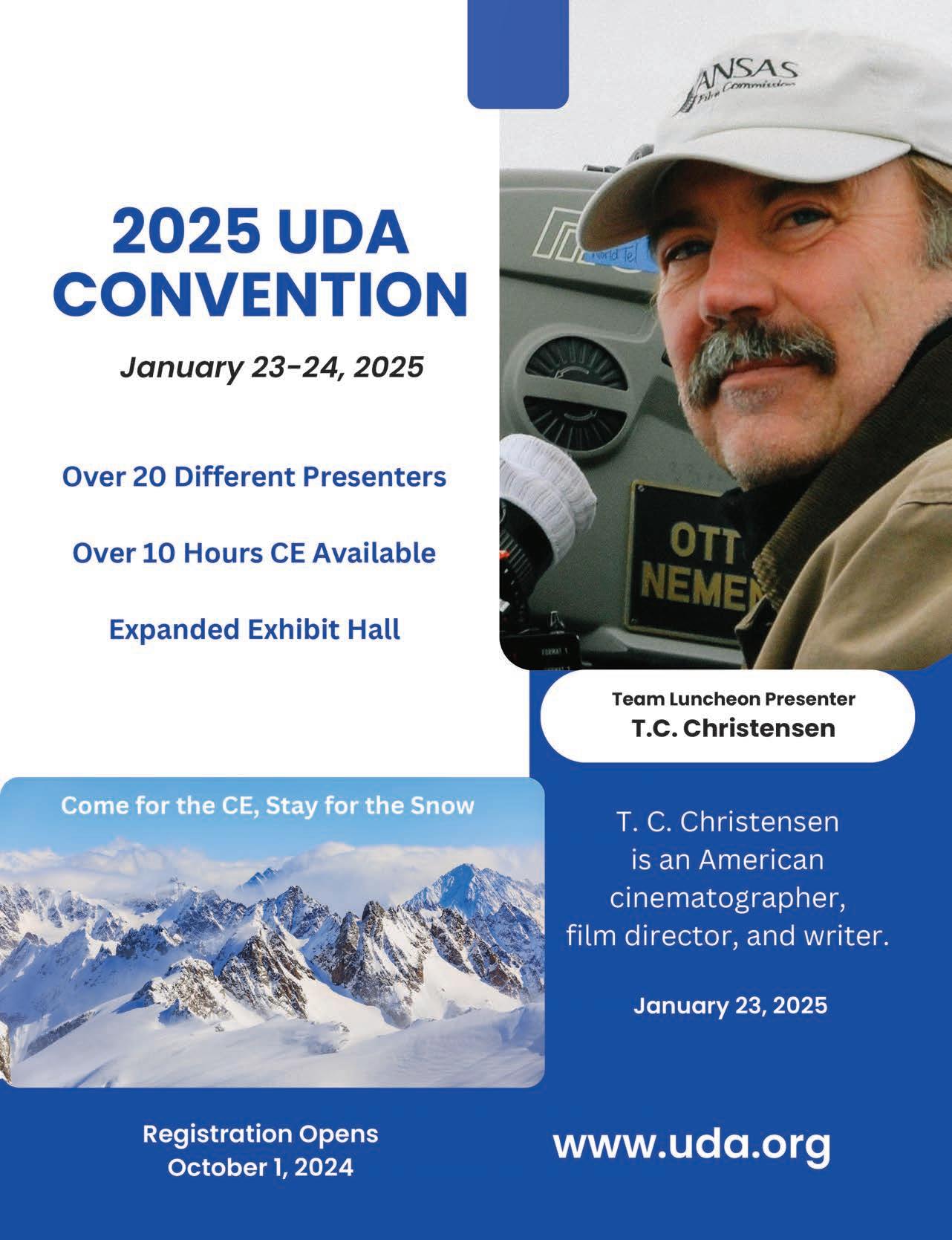
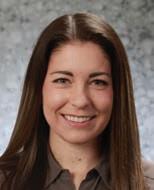
Throughout my last year of experience as the sole female dentist on the UDA Board, I have encountered a lot of vocal support for my involvement and insight as a woman in the profession. Last month I found myself contemplating the differences that come with being a woman in dentistry. Every year, March is designated as Women’s History Month to honor the accomplishments and strides women have achieved to become considered equals, especially in the workplace. However, there is an obvious disparity when it comes to female dentists, especially in Utah. According to a JADA study in January of 2023, the gender pay gap for dentistry reveals that women earn 22% less than men, proving how much more improvement can be made. There are many factors, both explained and unexplained, that contribute to the gender pay gap (in 2017, the ADA Health Policy Institute held a webinar panel to discuss the intricacies of this gap; check out the ADA website for the full webinar). While I am not shocked to learn about the disparity in income, what strikes me is the apparent lack of women present in leadership roles within dentistry. This lack of visibility for female dentists can be discouraging for those who are entering the profession and facing many of the challenges that come with entering a practice. I hope that as a membership we can identify and support new emerging leaders, especially women, to help represent and encourage the rest of us within the profession.
especially if working in a solo practice. Despite these tendencies, a 2017 JADA article (Nguyen Le, Thanh An, et al. “Trends in the earnings gender gap…”, JADA. 2017) discussed that number of children and marital status did not contribute to the wage gap between women and men in dentistry. One of biggest impacts seemed to be that women tend to work as employees more often than owning a practice. Women also were statisti-

As a young female dentist in Utah, it isn’t surprising to find that I am in the minority of dentists practicing in the state. According to the University of Utah Health most recent statistics from 2021, women accounted for only 6% of dentists in the state; HPI statistics show the current estimate is around 8.2%. This is quite a contrast with the national average, which was 35.2% in 2021 and 37.7% in 2023 (Supply of Dentists, 2001-2023; www.ada.org). That percentage is poised to grow drastically, since dental school enrollment has become close to or over 50% female at both Utah dental schools in the last few years, mirroring the nationwide trend. While this movement towards equal distribution is encouraging, there is still a void in women in leadership roles among many organizations. There have only been 5 women to hold the position of ADA President, including the current leader, Dr. Linda Edgar. Historical prejudice aside, there are still a lot of barriers for women in the field. Struggles balancing maternity leave, childcare, and homemaking often fall more on female shoulders than male. For a woman who just gave birth, taking off many weeks to recover is a luxury that many dentists cannot afford,
cally more likely to accept lower paying insurances, including Medicare (Vujicic, Marko, et al. “Time to talk about the gender pay gap..”, JADA. 2017). While these are not necessarily “bad” practices, there is an impact on the financial security and worklife balance of those employees. I would encourage all dentists, men and women, to not be afraid of making changes to grow their business, such as refusing to accept poor reimbursement from contracted insurance plans (see last issue for Dr. Rodney Thornell’s advice). This also benefits the entire profession overall, not just practicing female dentists, by denying the abysmal reimbursements that we tend to see in our state.
Some may wonder why helping women in dentistry matters in the grand scheme of our profession. According to many recent studies and articles, there are many economic and societal benefits to reap when the gender pay gap is smaller. The Center for American Progress notes that “Women’s wages are not just critical for them and their families but also for U.S. economic growth” (“Closing the Gender Pay Gap”, Mar 2024). Women who do well in their careers will be more likely to stay in the labor force and can create more stability for their families. To help grow the entire profession, supporting women in dentistry can help boost the overall earnings and job satisfaction of a dental career. Those who are more financially secure and happy in their
careers are also more likely to volunteer for leadership positions and can inspire others to follow.
I have had many mentors throughout my journey in dentistry and at the UDA. While I have learned a lot from both men and women, the women who have paved the way before me have made a direct impact in my desire to help promote our profession. Seeing successful women who can also be leaders inspired me to pursue extracurriculars outside of my paying job. I hope to do the same for those who follow me. I believe that with the support of both men and women, we can include those members who feel overlooked or under-represented in our leadership. I hope that together we can be an inclusive organization and assist all members in our state. After all, that is what the UDA is for!
Laura Kadillak, DDS
ADA Delegate
Cited Sources:
Nadeau, Sarah, et al. “Closing the Gender Pay Gap.” Center for American Progress, 21 Mar. 2024, www.americanprogress.org/article/ playbook-for-the-advancement-of-women-in-the-economy/closingthe-gender-pay-gap/.
Nguyen Le, Thanh An, et al. “Trends in the earnings gender gap among dentists, physicians, and lawyers.” The Journal of the American Dental Association, vol. 148, no. 4, Apr. 2017, https://doi. org/10.1016/j.adaj.2017.01.005.
“U.S. Dentist Demographics Dashboard.” U.S. Dentist Demographics | American Dental Association, ADA Health Policy Institute , 2023, www.ada.org/resources/research/health-policy-institute/us-dentist-demographics.
Vujicic, Marko, and Tony LoSasso. “The Gender Pay Gap in Medicine, Law and Dentistry.” American Dental Association. 2017, https:// www.ada.org/resources/research/health-policy-institute/dental-practice-research/the-gender-pay-gap-in-medicine-law-and-dentistry. Accessed 2024.
Vujicic, Marko, et al. “Time to talk about the gender gap in dentist earnings.” The Journal of the American Dental Association, vol. 148, no. 4, Apr. 2017, pp. 204–206, https://doi.org/10.1016/j. adaj.2017.02.004.
“Women in Dentistry.” University of Utah Health | University of Utah Health, 23 Aug. 2022, uofuhealth.utah.edu/notes/2021/07/women-dentistry.

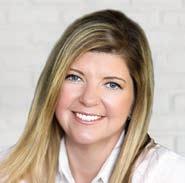

� Dr. David Chamberlain
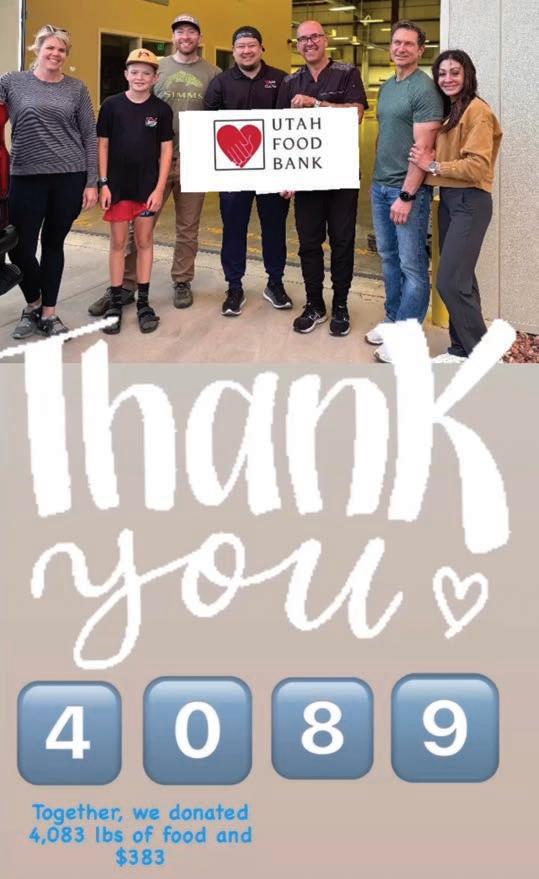
This April, Dr. Mike Florence and his wife Shelly of Sunset Dental in St. George spearheaded a food drive to collect donations for the Utah Food Bank Southern Distribution Center. Dr. Florence rallied his fellow dentists in the St. George area to join the effort by having collection bins at their offices throughout the month.
To increase donations, volunteers including local dentists, dental office team members, and their families set up tables in front of Harmon’s, Lin’s, and Smith’s grocery stores to ask shoppers to donate non-perishable food items as they entered and exited. The volunteers worked shifts from 8am to 6pm on April 27 to collect donations directly from the community.
“With so many families struggling from the impacts of inflation and the cost of living, I wanted our dental community to step up and help our neighbors in need,” said Dr. Florence. “I’m
proud that my colleagues enthusiastically joined this food drive to give back to the community that supports our practices.” The response was overwhelming, with dentist offices across St. George collecting and donating over 3,500 meals.
On April 27th, Dr. Florence and volunteers gathered up donations to deliver three truckloads to the Utah Food Bank. “We are so grateful to Dr. Florence and the entire dental community for their incredible generosity,” said Jacob Miner, Director of the Southern Distribution Center of the Utah Food Bank. “This substantial donation will provide meals for hundreds of

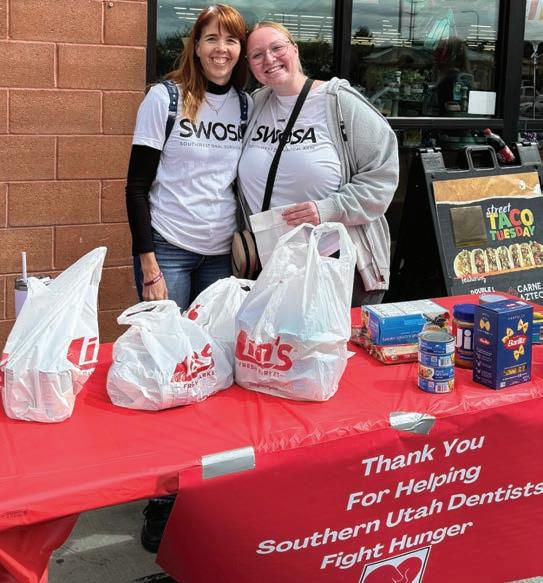

families seeking our assistance. It’s an amazing example of how the healthcare community can come together to take care of our community.” The dental offices plan to continue hosting an annual food drive. “Taking care of our patients’ smiles is our top

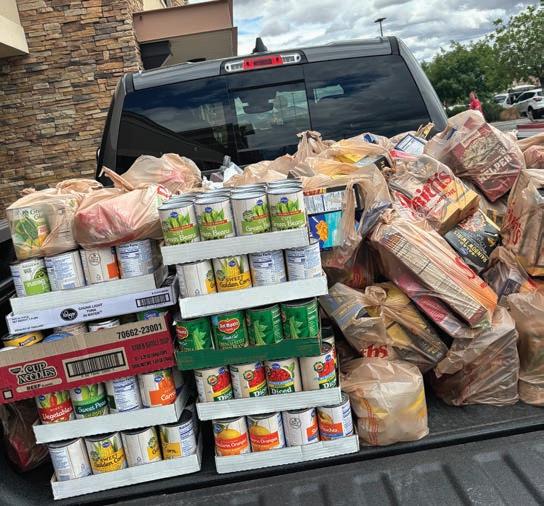
priority, but we also want to ensure our community has access to life’s most basic needs like food on the table,” Dr. Florence stated. “I hope we’ve started a wonderful new tradition of service among St. George area dentists.”
MCNA Insurance Company is pleased to administer benefits for the Utah Medicaid Dental Program.
MCNA is a provider-centered organization committed to helping dentists serve Medicaid and CHIP enrollees. We provide dentists with leading-edge technology and superb customer service support to reduce missed appointments and encourage patients to seek timely dental care.
For more information, visit us online at: www.mcnaUT.net

The American Dental Association (ADA) urges all dental practices to remain vigilant after it was contacted by the Federal Bureau of Investigation (FBI) with information regarding a credible threat to the practices of oral and maxillofacial surgeons.
On Tuesday, May 6, 2024, the FBI informed the ADA and the American Association of Oral and Maxillofacial Surgeons (AAOMS) of a credible cybersecurity threat to the practices of oral and maxillofacial surgeons. The FBI said that as of that date there were no known cyberattack victims, but the agency is working proactively to raise awareness to help prevent victimization. The FBI suspects the group behind the cyberattacks may be shifting tactics to oral and maxillofacial surgery practices after targeting plastic surgeons last year.
While this current threat is focused on oral and maxillofacial surgeons, the FBI is concerned that the practices of general dentists and other specialists could also eventually be targeted.
Cybercriminals often use social engineering scams — such as phishing (email), SMSishing (through text or instant messaging apps) and vishing (using phone calls and voicemail) — to gain access to sensitive personal data such as electronic protected health information. Spear phishing refers to a phishing email appearing to be from a trusted contact. For example, a threat actor may use phishing to impersonate a credentialing agency. Through these scams, threat actors try to convince people to reveal sensitive information, or to click on a link, open an attachment or visit a website that causes malware to be deployed. This malware can lead to ransomware, which blocks system and/or file access until money is paid.
The FBI provided an example in which the threat actor poses as a new patient or says they want to become a patient at the practice to obtain new patient forms online. Once the forms are received, the threat actor will then contact the practice to report
they are having trouble submitting them online and ask if they can scan the forms and email them instead. The threat actor then emails the “forms” as an attachment. When the attachment is opened malware is deployed in a phishing scheme.
The FBI requests dental practices that experience any fraudulent or suspicious activities to report them to the FBI Internet Crime Complaint Center at ic3.gov.
The Cybersecurity & Infrastructure Security Agency (CISA) recommends four vital ways to protect your practice from cyberthreats:
• Teach your team to recognize and avoid phishing
• Require strong passwords
• Require multifactor authentication
• Update all business software
The following resources are also available to support healthcare professionals:
• A CISA.gov toolkit aids healthcare practices in building cybersecurity foundations and implementing more advanced, complex tools to stay secure and ahead of current threats.
• The U.S. Department of Health and Human Services’ Knowledge on Demand resource offers five free cybersecurity trainings that align with the top five threats named in HHS’ Health Industry Cybersecurity Practices. HHS also offers information on how the HIPAA security rule can help defend against cyberattacks
• The Office of the National Coordinator for Health Information Technology’s Security Risk Assessment Tool, a resource designed to help medium and small providers conduct a security risk assessment as required by the Health Insurance Portability and Accountability Act.
• The U.S. Department of Health and Human Services Office of Information Security and Health Sector Cybersecurity Coordination Center’s “Artificial Intelligence, Cybersecurity and the Health Sector” guide shares how health care entities help protect against AI-enhanced cyberthreats.
• Additional resources can be found at ADA.org/riskmanagement
As the nation’s largest organization of dentists, the ADA is advocating on behalf of all dentists at the federal level to recommend several measures to protect and ensure the resilience of health care infrastructure against cyber threats. The ADA will continue to lead this charge and provide cybersecurity updates as they become available, all in service to you and your patients. Please visit ADA.org to see the many ways the ADA advocates on behalf of dentists nationwide.
ADA

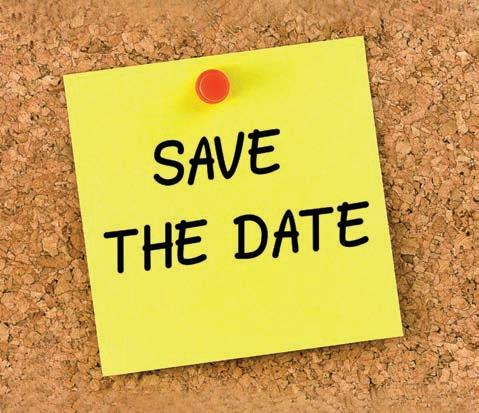
2024 Continuous Quality Improvement Meetings
Please Plan to Attend!
Thank you Dr Rodney Thornell, UDA President Elect, Dr Darren Chamberlain, ADA Delegate, Dr Val Radmall, UDA Executive Director and Many Dental Students from Roseman University and the University of Utah, for attending the ADA Lobby Day in Washington DC. We Appreciate Your Efforts in Advocating for the Dentists and Dental Students of Utah.
Save the Date for the UDA’s next Lobby Day February 28, 2025.
2024 Continuous Quality Improvement Meetings
Please Plan to Attend!
Box Elder
South Davis
Uintah Basin
Cache
Central
Cedar Breaks
Dixie
Wasatch Back
North Davis
Provo
Weber
Salt Lake North, Salt Lake South,
Tooele
Canyonlands
August 27 @ 6:00
September 3 @ Noon
September 5 @ 6:30
September 10 @ 6:30
September 17 @ 6:30
September 19 @ Noon
September 19 @ 6:30
September 24 @ 6:30
September 26 @ 6:30
October 8 @ 6:30
October 10 @ 6:30
October 29 @ 6:30
November 7 @ 6:30
Together, we accomplished so much in 2023, from advancing legislation and scientific research to delivering new resources to help you thrive. Explore these top moments at ADA.org/wins
Debuted the ADA Forsyth Institute, combining the ADA Science and Research Institute (SRI) and the Forsyth Institute into one world-class research organization driving innovations to propel dentistry forward.
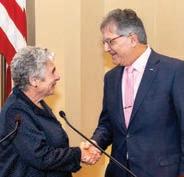
Awarded a $130,000 grant from the Crohn’s & Colitis Foundation to conduct research on saliva testing to monitor and predict the exacerbation of inflammatory bowel disease in pediatric patients.
ADA Chief Economist Marko Vujicic, Ph.D., testified at the Senate’s first oral health hearing in a decade, about the state of oral health in the U.S. to address policies around health disparities.
Held the 1st ADA Health and Well-Being Summit bringing Tripartite stakeholders and industry experts together to support developing wellness programs for the dental community.
With the help of ADA’s State Public Affairs program, over 100 bills have been filed by 34 state dental societies looking to improve dental insurance in their state to benefit patients and dentists.
Continued fighting for improved access to care, advocating for expanded payment codes at hospital outpatient and ambulatory surgical centers so patients can avoid surgical center billing limitations that previously denied or delayed treatment.

Our “Dental Sound Bites™” podcast won 3 national awards, surpassed 100,000 downloads and continues to bring you real talk on the biggest issues facing dentists today.
Our ADA Member App now has over 26k downloads, offering a career path quiz and expanded career resources, dental licensure support, mentorship opportunities and more.

Created ADA.org/FMLA , a central resource on Federal and State policies covering employment leave to support dentists needing time away from the practice.
We’re now on TikTok! Follow us @americandentalassoc
Increased the Laurel Road student loan refinancing discount and added a free loan consultation benefit from GradFin.
Connected 9,000+ dentists and dental professionals at SmileCon® 2023 with 300+ CE offerings, wellness sessions, speakers and networking opportunities.
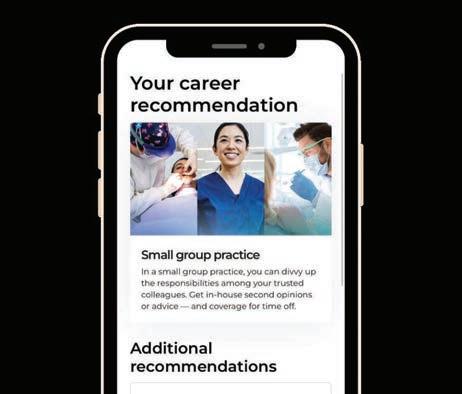
Developed Artificial Intelligence (AI) standards to assure that future uses of AI and AI-based products support high quality dental care and patient safety.
Strengthened our Tripartite during the 70+ cross-country visits made to state and local dental societies and schools by ADA leaders.
Supported improving children’s dental health via 1,265 Give Kids A Smile® events nationwide.
Scientific discoveries from The Journal of the American Dental Association attracted broad attention, being cited by the media over 3,000 times.
ADA Spokespersons provided science-based oral health nformation to hundreds of media outlets, including CNN , Good Morning , The Today Show and more.
Added new member discounts from Threadfellows, Compliancy Group and Avid Traveling!
Saved 115,000 dentists’ time on paperwork by using the ADA’s Credentialing Service, powered by CAQH®
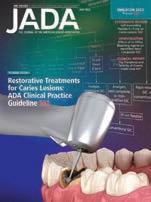
Published a new clinical practice guideline exploring management of acute dental pain in children to support your evidence-based treatment decisions.
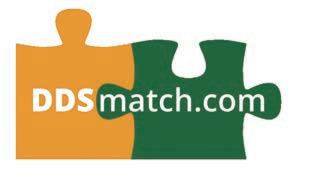
Successfully connecting the dentist’s present with their future
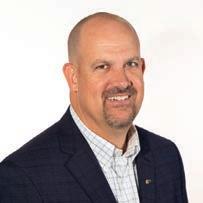
When the time is right, The Trusted Transition Process® provides a clear, consistent path to help you transition your practice, while maintaining the legacy you worked so hard to establish.
We help visualize your future, set achievable goals and devise strategies to start you in the direction of your post-transition dreams, well in advance of your intended transition timeframe to help you transition on your terms.
We identify the unique aspects of your practice and share them strategically and confidentially with our extensive network of pre-screened viable candidates. Our company invests heavily in Google digital marketing to promote our listings. We pair today’s technology with a human touch to determine potential matches.
Your practice will be analyzed by independent third-party Certified Valuation Analysts with dental industry expertise. Their findings are fair, reliable, and respected by banking institutions. This analysis leads the financial process for all parties. For your building, DDSmatch provides Broker Price Opinions utilizing Modum, a commercial valuation reporting service known for its quality.
DDSmatch will collaborate with Dental Intelligence to analyze your data to reveal your practice’s potential in a detailed report. The Clinical Opportunity BlueprintTM reveals opportunities, detailing production mix and intensity, new patient flow and more to give potential buyers confidence in their future success.
After potential matches are discerned, our advisors will lead an in-depth interview so you can determine the best match for you, your staff and your patients.
We work with Attorneys, Accountants, Practice Management Consultants and Financial Advisors to foster a smooth transition. We can connect you to local Commercial Real Estate Brokers or personally assist in lease negotiation of the building and land sale.
For the final stage of the process, our team will engage advisors from both sides to provide the necessary documents, including purchase agreements, post-transition employment agreements and building leases to successfully complete The Trusted Transition Process.®


